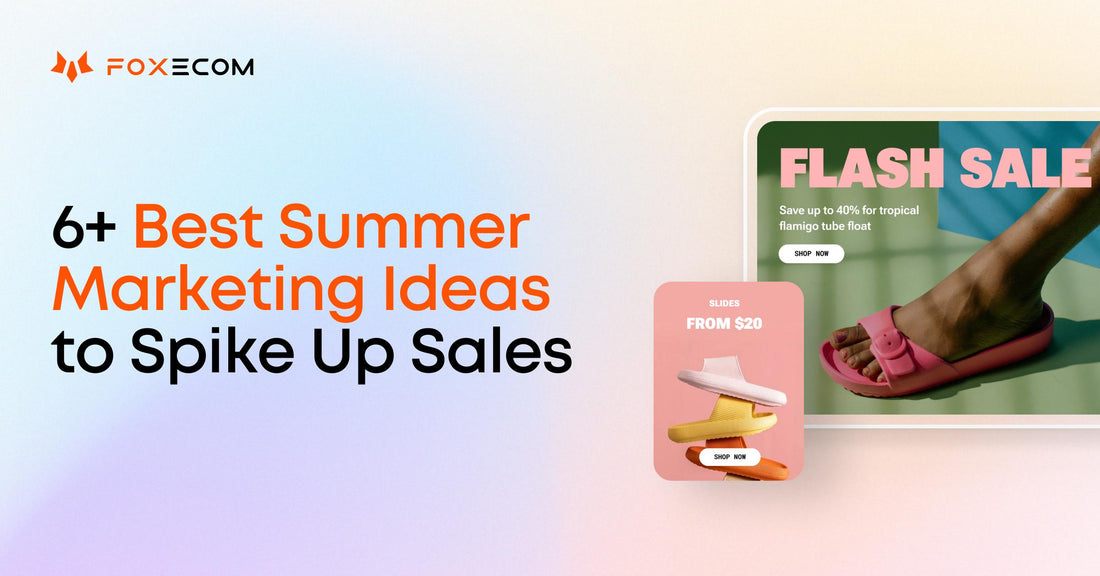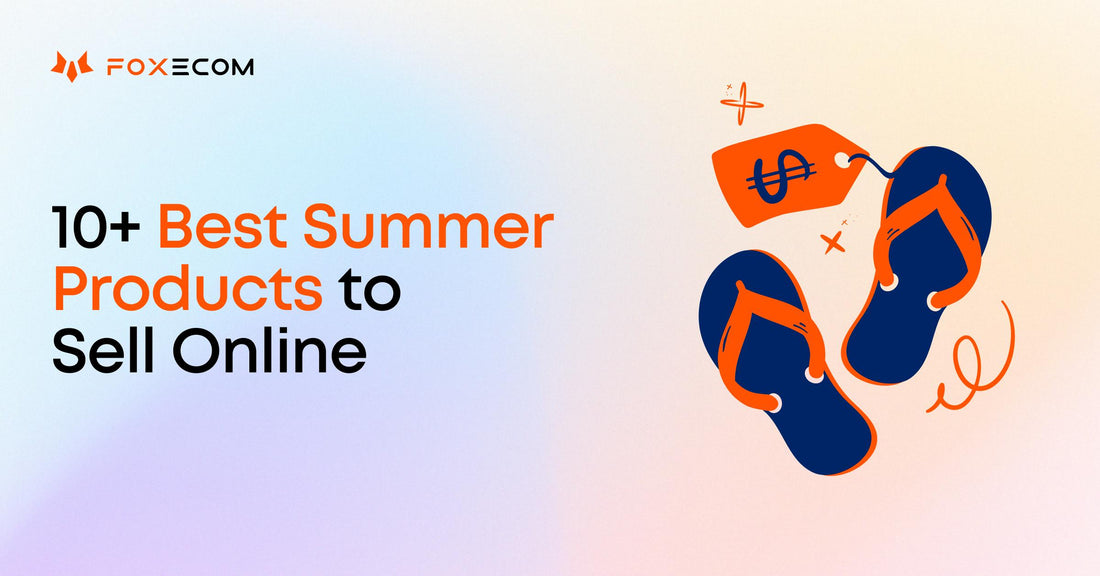Mother's Day is approaching and you're on the hunt for the perfect handbag to give to your beloved mom. You click on some websites and are immediately greeted by a cluttering and confusing product page with pixelated images. Feeling disappointed and about to abandon your search, you come across a product page that stands out like a ray of sunshine amidst the gloom. It catches your eye with a sleek and elegant design. A variety of captivating images of bags in different colors and styles are presented in front of you. You're even able to view models sporting the bags with various outfits. Instantly drawn in, you find the ideal handbag for your mother and make your purchase.
See how an exceptional eCommerce product page design can make all the difference? In fact, 59% of people prefer browsing ‘beautiful and well-designed’ sites to basic ones. With this in mind, we will be touching on great examples of effective product pages and actionable tips to build and optimize your eCommerce product page. Let's dive in and empower your visitors to take action and drive them down your sales funnel.
Beautiful eCommerce product page examples
In this section, we are going to show you 5 Shopify product page designs that are sure to inspire you, with and without third-party apps, and then walk through how they create product detail pages that motivate shoppers to buy.
1. Outdoor Voices - Speak to your target customers
Outdoor Voices focuses on offering athleisure apparel that may be worn on a daily basis. Models are featured in high-quality and playful photos on their product pages, creating an approachable and authentic vibe that appeals to their target audience.

The eCommerce product pages are notably well-designed with a clean and functional layout that provides essential details such as product specifications, care instructions, and how it fits. And the design still ensures that customers are not distracted from the primary goal: to click on the "Add to Bag" button and make a purchase.

2. InArt - Provide in-depth details

InArt specializes in selling home interior products for the bathroom and kitchen. At first glance, they use a descriptive product name to showcase the key features of their items, which helps the page attract clicks in search results.
You'll find the following additional features on this eCommerce product page design:
- A comprehensive breakdown of specifications
- Links to related products
- An image gallery with a how-to-use video
- Customer reviews to persuade customers to make a purchase.
3. Kettle & Fire - Make key elements noticeable
Kettle & Fire is a brand that specializes in bone broths and soups prepared by world-renowned chefs and packaged in long-lasting containers.

On its product page, the product price and "Subscribe & Save $10.20" call-to-action catch the eye, and customers can easily add items to their cart using clear buying options.
In addition, the page features a dynamic carousel displaying various product images, such as nutritional information, lifestyle pictures, and "what's inside" graphics, and more.
If you want to create compelling eCommerce product page design like Kettle & Fire, let's try Foxify Smart Page Builder. You can browse 80+ templates from various industries or start from scratch to build your high-converting pages effortlessly.
4. Pilgrim - Establish a sense of urgency

Pilgrim is a brand focusing on products for curative treatment by the use of essences. It emphasizes stock levels to create a sense of urgency, which can encourage shoppers to checkout faster.
Beyond that, a few core components are also added to assist customers in determining whether they want to buy the product or not:
- Short and detailed product descriptions that are easy to digest.
- Multiple payment methods such as Apple Pay, PayPal, G Pay, and Shop Pay.
- Images of recognizable lifestyles.
5. Rocky Mountain Soap - Incorporate customer reviews

Rocky Mountain Soap is a retailer that offers natural body care products. What makes Rocky Mountain Soap remarkable at first glance is the embedded customer reviews, which feature 5-star ratings from almost 400 reviews. This can have a powerful influence on customers' psychology, providing them with the confidence that they're making a smart purchase. And if you want to learn more about what their customers say, you can easily scroll and read recent testimonials.

Ecommerce product page best practices
Having explored some great examples of Shopify product pages, it's time for you to make your own shine. With the following best practices for eCommerce product pages, you can transform more visitors into customers and boost your conversion rate. Let's explore the proven ways to create a high-converting Shopify product page for your eCommerce store!
1. Showcase your products with high-quality visuals
When setting up a product page, one of the crucial elements to consider is the product images. They play a vital role in convincing customers to make a purchase since online shoppers cannot physically touch or interact with the product. According to studies by Justuno, in making a purchase decision, 93% of customers regard visual appearance as the primary determining factor. Therefore, it's essential to provide high-quality product images that represent the texture, scent, or any other unique aspects of your products.
To ensure your product images are of the highest quality, start by familiarizing yourself with the necessary photography tools and learning how to set up your product photos. Then, check out these actionable tips to help you generate appealing and impressive images:
Show different angles of your products
Let’s say you're eyeing stylish sneakers. You may have found one that looks perfect for your needs, but the eCommerce product page only displays one image. Without additional photos from different angles, you won't know what sneakers look like from the top, bottom, or sides.
According to research by Salsify, 73% of shoppers prefer to see more than 3 images before buying something online. Therefore, by showcasing sneakers’ features through images taken from different angles, customers can get a better idea of what the product looks like and how it will fit their needs.
Now, let’s take a look at an Adidas product page.

Source: Adidas
You can learn from Adidas by using modern techniques such as 360° views (read how-to here) or close-up shots to provide a comprehensive view of the product.
Display product variants
If you offer products with multiple options, such as different colors or sizes, it's great to display these variations on your product page. Instead of leaving it up to the customer to imagine what the blue T-shirt might look like versus the mint one – show them!

By displaying a full product view of each color or pattern variant, you can help your customers better visualize the product and show them exactly what to expect. This can help build trust and confidence in your product and brand, increasing the likelihood of saying Yes: they absolutely want the mint T-shirt instead of the blue one.
Contextualize your photos
It's helpful to provide context by displaying the product in a real-life scenario. Think about what your product should be used with, or how and where it might be used.
For example, you're selling high heels, so showing a model wearing the shoes with a dress could be an effective way of adding context to the photo. This would demonstrate how the shoes can be paired with other clothing items to create a fashionable look, helping potential customers better visualize how the shoes might fit into their wardrobe and lifestyle. This, in turn, could increase the likelihood of them considering a purchase.

Source: Mango
Learn more about ways to add lifestyle context to your product photos.
2. Craft compelling product descriptions that convert
A product page should have a descriptive section that informs the customer about the product. This section can include product details and useful guides. Let's check out some tips for writing a high-converting product description:
- Keep sentences short and scannable: Avoid using long sentences that can tire out customers. Since people tend to read only about 16% of a page's content, you can use bullet points, different font sizes, white space, or short paragraphs to make the description easy to digest.
- Use powerful words to persuade: Certain words and phrases can elicit an emotional response in humans, making them more likely to buy the product. Use power words that sell to make your descriptions more persuasive.
- Write in a natural language and tone of voice: Craft your product description like a conversation with a friend, not a string of computer-generated words.
Let's see the product description of Swarovski:

Source: Swarovski
3. Build trust with social proof
The concept of social proof suggests that individuals are more inclined to purchase a product if they observe that other individuals have already bought and liked it.
Interestingly, research shows that consumers place greater trust in customer reviews than in product descriptions provided by the seller, with a difference of 12 times in trustworthiness.
In addition to customer reviews, to establish credibility and trust with your customers, you may consider incorporating star ratings, and testimonials. Additionally, leveraging social media is also a way to demonstrate your products in use and motivate customers to share their personal experiences.

Source: Amazon
4. Make your CTA stand out
The inclusion of call-to-action buttons (CTAs) plays a role in guiding customers from simply browsing to making a purchase. Failing to include a clear CTA can result in missed opportunities, as potential customers may be unsure how to proceed, for example. Thus, you can follow these recommendations to create an engaging CTA:
- Place the CTA high up the page: Usually, CTAs are positioned next to the product image and below the product details.
- Choose the proper size: Button size is extremely important, especially on small screens, so you need to ensure that your responsive design will not reduce the size of your buttons. In the Human Interface Guidelines, Apple recommends that buttons need a hit target of at least 44x44 points to make sure they can be comfortably and accurately clicked with a fingertip.
For a hassle-free experience, consider using third-party page builder apps like Foxify to design your buttons. These intuitive tools ensure seamless optimization across all devices, from desktops to tablets and mobiles.
- Make it visually appealing by using a contrasting or bright color: This draws attention and directs the customer's gaze toward the button.

5. Make pricing & shipping information clear
When visitors land on an eCommerce product page, they are often in the conversion stages of the marketing funnel and ready to make a purchase. Thus, showcase pricing and delivery details as clearly and prominently as possible on your product page.
Then, you could consider implementing the following techniques:
- Increase the font size: The price should be among the most significant elements on the page.
- Use a contrasting color to make the price stand out.
- Emphasize any discounts: Exhibit the original price alongside the new reduced price, and ensure that the savings are evident.
- Provide information regarding estimated delivery time and associated costs.
- Promote convenient payment options such as PayPal, ClearPay, etc.
Check out Pandora for the eCommerce product page design:

Source: Pandora

Source: Pandora

Wrapping up
In a nutshell, with the vast number of options available to consumers online, a well-crafted eCommerce product page can be the deciding factor in whether a shopper chooses your product over a competitor's. By following the best practices we've outlined, you can create a stunning and persuasive product page that resonates with your audience and ultimately drives more sales.
However, we understand that creating a compelling product page can be a daunting task, requiring a lot of time and skills. That's why we recommend Foxify app- a smart page builder, an all-in-one solution to streamline the process and produce remarkable results with ease. With a bundle of conversion-focused product page templates, tailored to a diverse range of industries, you can rest assured that your product page will stand out from the competitors. Simplify your journey to success with Foxify - a Shopify page builder today.





